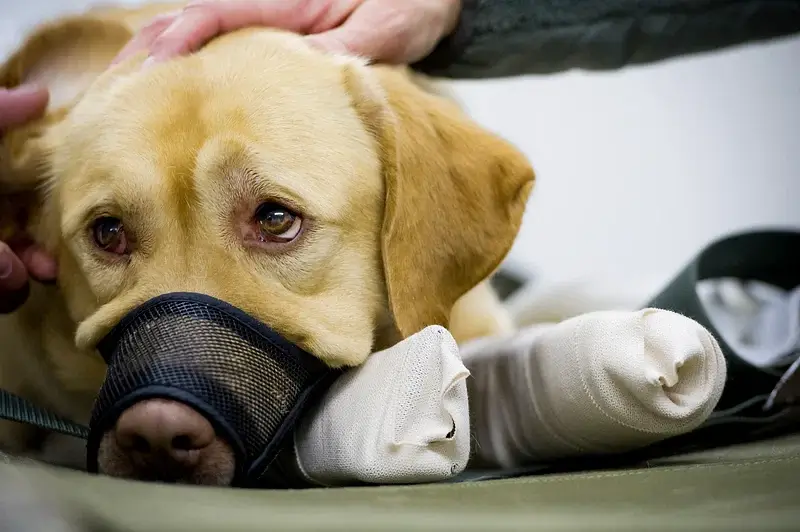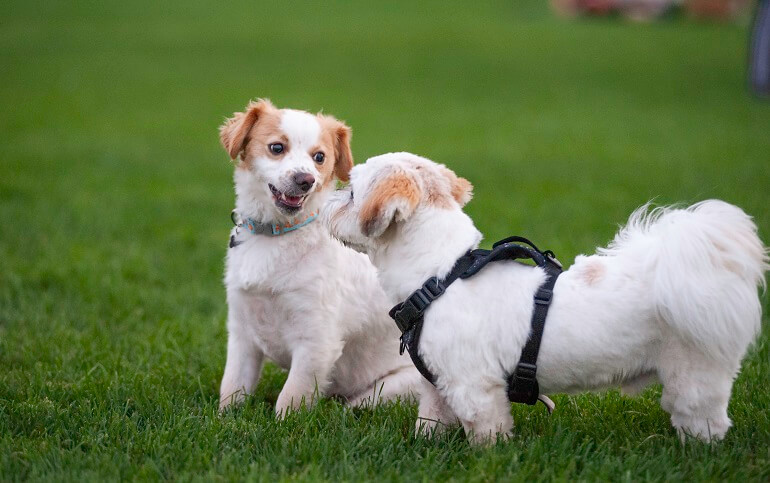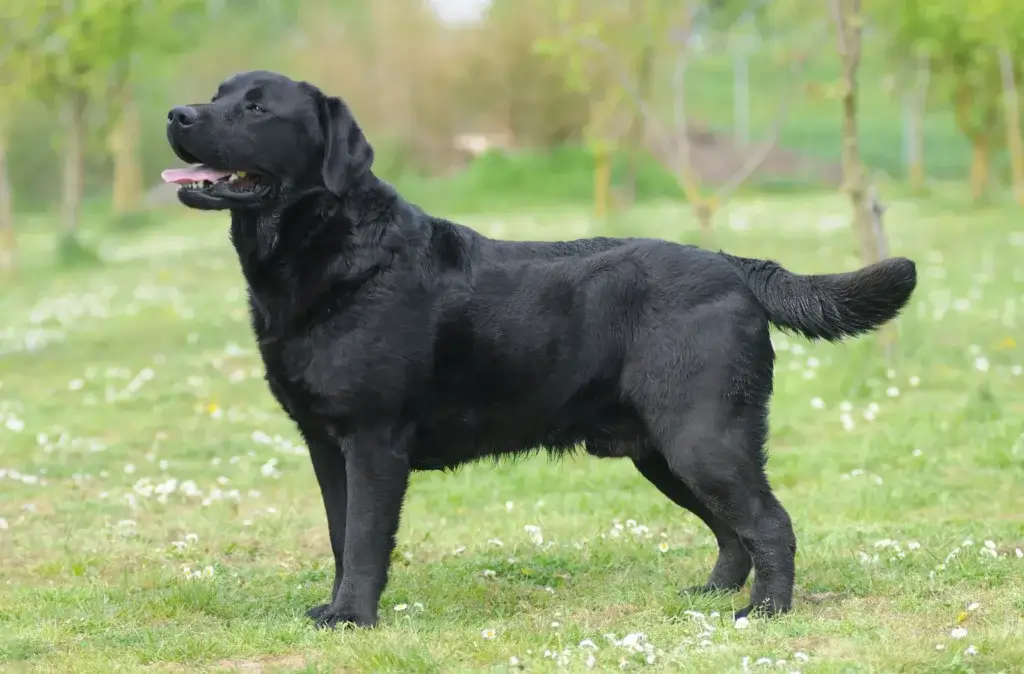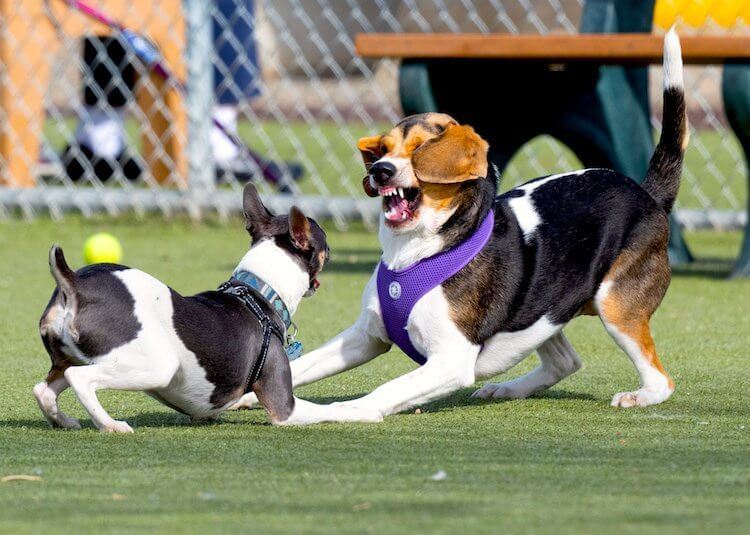How to Stop Food Aggression in Dogs Towards Other Dogs
Food aggression in dogs towards other dogs is a concerning behavior that can lead to conflicts and pose risks to both pets and their owners. Addressing this behavior is crucial for fostering a harmonious living environment and ensuring everyone’s safety. In this guide, we’ll explore effective strategies on how to stop food aggression in dogs towards other dogs.
Understanding the root causes of food aggression is essential. Factors such as genetics, past experiences, and environment can contribute to this behavior. By recognizing these triggers, pet owners can better address and manage food aggression in their dogs.
One of the primary objectives of this guide is to emphasize the significance of early intervention and proper training. Early socialization and obedience training play key roles in preventing the development of food aggression. Creating a safe feeding environment and implementing positive reinforcement techniques are essential for modifying this behavior.
Ultimately, this guide aims to empower dog owners with the knowledge and tools they need to address food aggression in their pets effectively. By implementing the strategies outlined in this guide, pet owners can create a peaceful and safe environment for their dogs to enjoy meal times without the threat of aggression towards other dogs.
Techniques to Address Food Aggression

Addressing food aggression in dogs toward other dogs requires a comprehensive approach that combines various techniques for managing and modifying this behavior. Below, we outline step-by-step techniques and real-life examples to illustrate their effectiveness.
Desensitization and counterconditioning:
This technique involves gradually exposing the dog to triggers that typically provoke aggression, such as another dog approaching their food bowl while providing positive experiences. Start by keeping the trigger at a safe distance and rewarding calm behavior. Over time, the distance will gradually decrease, and positive responses will continue to be rewarded. For example, if a dog becomes anxious when another dog approaches its food bowl, begin by keeping the other dog at a distance and gradually move closer as the first dog becomes more comfortable.
1. Real-life Example:
Lola, a Labrador mix, used to growl and snap at other dogs when they approached her food bowl. Sarah’s owner started desensitization by having another dog sit calmly several feet away while Lola ate. Sarah praised Lola and gave her treats to keep her calm. Over time, Lola became more relaxed around other dogs during meal times, and her aggression decreased significantly.
Resource Exchange Training:
This technique teaches dogs to voluntarily give up resources, such as their food bowl or treats, in exchange for rewards. Start by offering a high-value treat in exchange for the dog relinquishing their resource. Gradually increase the value of the reward as the dog becomes more compliant. Consistency and positive reinforcement are keys to success.
2. Real-life Example:
Max, a German Shepherd, used to guard his food bowl aggressively. His owner, Mike, implemented resource exchange training by offering Max a tasty treat in exchange for him moving away from it. With consistent practice, Max learned that giving up his food led to positive rewards, and his food aggression decreased over time.
Behavioral Modification Exercises:
These exercises focus on reinforcing positive behaviors and reducing food aggression. Examples include:
- “Leave It” Command: Teach the dog to leave food or treats when instructed, rewarding compliance with treats or praise.
- Hand Feeding: Feed the dog by hand to establish trust and reinforce positive interactions with food.
- Controlled Feeding: Feed the dog in a controlled environment where access to food is limited and interactions with other dogs are supervised.
3. Real-life Example:
Buddy, a Golden Retriever, used to exhibit food aggression towards other dogs during meal times. His owner, Emily, implemented behavioral modification exercises such as hand feeding and controlled feeding. With consistent practice and positive reinforcement, Buddy’s behavior improved, and he now eats peacefully alongside other dogs.
When applied with patience and consistency, these techniques can effectively stop food aggression in dogs toward other dogs and promote a harmonious living environment. Always consult with a professional if you encounter challenges or need additional guidance.
Understanding Food Aggression in Dogs

Understanding food aggression in dogs is essential for effectively addressing and managing this behavior. Food aggression refers to a dog’s possessive or aggressive behavior when it comes to food. This behavior can manifest in various ways, including growling, snapping, or even biting, especially when other dogs are nearby.
The evolutionary roots of food aggression trace back to dogs’ ancestors, who had to compete for limited resources in the wild. In the wild, resources like food were scarce, leading to the development of behaviors like resource guarding as a means of survival.
Food aggression can develop due to a combination of factors. Genetics may predispose certain breeds to be more prone to this behavior. Additionally, past experiences, such as a history of food scarcity or competition, can contribute to the development of food aggression. The environment in which a dog is raised also plays a significant role. For example, dogs in multi-dog households may develop food aggression as they compete for resources.
Examples of typical food aggression behaviors include:
- Growling or snarling when approached while eating
- Guarding food or treats by standing over them
- Lunging or snapping at other dogs who come too close to their food bowl
Understanding these behaviors is crucial for pet owners to recognize and address food aggression in their dogs. By identifying the underlying factors contributing to food aggression, pet owners can implement effective strategies to stop food aggression in dogs toward other dogs.
Recognizing the Signs of Food Aggression
Recognizing the signs of food aggression in dogs is crucial for pet owners to intervene and prevent conflicts. Both subtle and overt signs can indicate food aggression in dogs.
Subtle signs of food aggression may include tense body language, such as stiffening or freezing when approached while eating. Dogs may also exhibit subtle warning signals like lip licking, avoiding eye contact, or low growling.
Overt signs of food aggression are more direct and may involve aggressive displays such as snarling, snapping, or biting. These behaviors typically occur when other dogs or humans approach the food bowl or attempt to take away food or treats.
Body language is a key indicator of food aggression in dogs. Signs of tension, such as raised hackles, pinned-back ears, or a stiff body posture, can signal that a dog feels threatened or defensive about their food.
Vocalizations such as growling, barking, or even whimpering can also indicate food aggression. Dogs may use vocal cues to communicate their discomfort or to warn others to stay away from their food.
Behavior during meal times can provide insight into a dog’s attitude towards food. Dogs that guard their food bowl, hover over their food or quickly consume their meals may be exhibiting signs of food aggression.
To help readers identify potential food aggression in their dogs, consider offering scenarios such as:
- A dog growling or snapping when approached while eating
- A dog stiffens and shows aggression when another dog comes near their food bowl
- A dog displaying tense body language and refusing to move away from their food or treats
By recognizing these signs and scenarios, pet owners can take proactive steps to address and ultimately stop food aggression in dogs toward other dogs.
Identifying Triggers and Contributing Factors

Identifying triggers and contributing factors is key to understanding and addressing food aggression in dogs toward other dogs. Various triggers and situations can exacerbate food aggression in dogs. Common triggers include:
- Presence of other dogs during mealtimes
- Competition for resources, such as food or treats
- Interruption or disturbance while eating
- Changes in routine or environment
Factors such as competition, anxiety, and resource scarcity can contribute to food aggression. Dogs may feel the need to guard their food more intensely if they perceive a threat to their resources. Additionally, dogs with a history of anxiety or insecurity may be more prone to exhibiting food aggression as a means of asserting control or coping with stress.
Understanding these triggers and factors is essential for effective behavior modification. By identifying the specific situations or stimuli that provoke food aggression, pet owners can implement strategies to manage and modify their dog’s behavior. For example, feeding dogs in separate locations or at different times can reduce competition and minimize the likelihood of conflicts during meal times.
Furthermore, providing a consistent and predictable feeding routine can help alleviate anxiety and establish trust with the dog. By creating a positive association with meal times and addressing underlying issues such as anxiety or resource scarcity, pet owners can effectively stop food aggression in dogs toward other dogs.
importance of Early Socialization and Training
The importance of early socialization and training cannot be overstated when it comes to preventing dog food aggression toward other dogs. Early socialization plays a crucial role in shaping a dog’s behavior and temperament. By exposing puppies to various people, animals, and environments from a young age, pet owners can help them learn appropriate social skills and reduce the likelihood of developing food aggression.
Proper training and obedience commands are essential tools for managing food-related behaviors in dogs. Teaching dogs basic commands such as “sit,” “stay,“ and “leave it“ can provide pet owners with effective ways to control their dog’s behavior around food. Consistent training helps establish boundaries and reinforces positive behaviors, making it easier to address and prevent food aggression.
Establishing a positive feeding routine is also key to preventing food aggression from developing. Pet owners can create a calm and predictable environment during meal times by:
- Feeding dogs in separate locations to avoid competition
- Using food puzzles or slow-feeders to promote mental stimulation and prevent gulping
- Avoiding free-feeding and instead feeding dogs at scheduled times
- Supervising meal times and intervening if any signs of food aggression arise
By prioritizing early socialization, consistent training, and a positive feeding routine, pet owners can effectively stop food aggression in dogs toward other dogs and promote peaceful coexistence in the household.
Creating a Safe Feeding Environment
Creating a safe feeding environment is essential for preventing conflicts between dogs and stopping food aggression in dogs toward other dogs.
Feeding dogs separately is a practical tip to minimize competition and reduce the likelihood of food aggression. By feeding each dog in a separate area or room, pet owners can ensure that each dog can eat without feeling threatened or challenged by other dogs.
Using food puzzles is another effective strategy for promoting mental stimulation and preventing food aggression. Food puzzles require dogs to work for their food, slowing down their eating pace and reducing the potential for conflicts over resources. Puzzle feeders can also help alleviate boredom and anxiety, which are common triggers for food aggression.
Establishing feeding routines can help create a predictable and calm environment during meal times. Pet owners should feed their dogs at the same times each day and avoid free feeding, where food is available to dogs at all times. A consistent feeding schedule can help reduce anxiety and establish trust with the dogs, minimizing the likelihood of food aggression.
Supervision and management are crucial when multiple dogs are present during meal times. Pet owners should actively monitor their dogs during feeding to intervene if any signs of food aggression arise. This may involve separating dogs during meal times or using barriers to prevent access to food until all dogs have finished eating. By providing adequate supervision and management, pet owners can ensure a safe and peaceful feeding environment for their dogs.
By implementing these practical tips and strategies, pet owners can create a safe feeding environment that minimizes conflicts between dogs and effectively stops food aggression in dogs toward other dogs.
Seeking Professional Help
Seeking professional help is a crucial step for pet owners who are struggling to address food aggression in dogs toward other dogs.
Encourage readers to seek assistance from certified dog trainers or behaviorists who specialize in dealing with behavioral issues such as food aggression. These professionals have the expertise and experience to assess the situation accurately and develop personalized training plans tailored to the specific needs of the dogs and their owners.
Provide guidance on selecting qualified professionals by recommending sources such as local veterinary clinics, dog training organizations, or professional associations. It’s essential to choose professionals who are certified and have a proven track record of success in addressing food aggression and other behavioral issues.
Highlight the benefits of personalized training plans, which are designed to address the underlying causes of food aggression and tailor interventions to the individual dog’s temperament, history, and environment. Unlike generic solutions, personalized training plans take into account the unique circumstances of each dog and provide targeted strategies for modifying behavior effectively.
By seeking professional help, pet owners can access the support and guidance they need to address food aggression in dogs toward other dogs. With the assistance of certified professionals, pet owners can implement personalized training plans and create a safe and harmonious environment for their dogs.
Conclusion
Managing and preventing food aggression in dogs towards other dogs requires a combination of understanding, patience, and consistent training. Here are the key takeaways to keep in mind:
- Recognize the signs: Be aware of the subtle and overt signs of food aggression in dogs and take proactive steps to address them.
- Implement training techniques: Use desensitization, counterconditioning, and resource exchange training to modify food aggression behaviors positively.
- Create a safe environment: Feed dogs separately, use food puzzles, and establish feeding routines to minimize conflicts during meal times.
- Seek professional help: If you’re struggling to address food aggression on your own, don’t hesitate to seek assistance from certified dog trainers or behaviorists.
Remember, patience, consistency, and understanding are crucial when addressing behavioral issues like food aggression. It takes time for dogs to unlearn negative behaviors and adopt new, more positive ones.
Lastly, always prioritize your dogs’ well-being and safety. If you’re unsure how to handle food aggression or if the situation seems beyond your control, seek help from professionals. Your dogs’ happiness and harmonious relationships between them are worth the effort.
how to stop food aggression in dogs towards other dogs (FAQs)
What is food aggression in dogs?
Food aggression in dogs is a type of resource-guarding behavior where a dog becomes defensive or aggressive when eating or around food. Signs include growling, snapping, biting, or stiffening of the body.
Why do some dogs develop food aggression?
Dogs may develop food aggression due to a variety of reasons, including past trauma, a scarcity mentality from a lack of regular feedings in their history, or inadequate socialization with other dogs.
Can food aggression be dangerous?
Yes, food aggression can lead to dangerous confrontations between dogs and even between dogs and humans. It’s important to address this behavior to prevent potential injuries.
How should I start addressing food aggression in my household?
Begin by observing and documenting the instances of food aggression to identify patterns and triggers. Consult with a veterinarian to rule out any medical issues. Gradual desensitization, counterconditioning, and command training are effective techniques.
Are there specific feeding strategies that can help?
Yes, using separate feeding areas, having scheduled feeding times, and employing barriers can help manage food aggression. Each dog should have a designated area where they can eat peacefully without intimidation.
When should I seek professional help?
If the aggressive behavior does not improve with basic training strategies or if it poses a significant threat to other pets or family members, it’s advisable to consult a professional dog trainer or behaviorist.
Can interactive toys and puzzles help with food aggression?
Yes, interactive toys and puzzle feeders can promote a positive and engaging mealtime experience and can help reduce food aggression by keeping the dog mentally stimulated.
Is it okay to use a muzzle to control food aggression?
Using a muzzle can be appropriate in certain situations as a temporary measure to prevent biting. However, it should be introduced properly and not used as a long-term solution. Behavioral training should accompany its use.
How long does it take to stop food aggression in dogs?
The duration varies depending on the severity of the aggression and the consistency of the training. Some dogs may show improvement in a few weeks, while others might take several months to fully overcome the behavior.
What if food aggression is only directed at other pets and not humans?
The approach remains the same: consistent training is key. Keep feeding times controlled and separate dogs during meals, using positive reinforcement to encourage calm behavior around other pets.
By following these guidelines and addressing the nuances of food aggression, dog owners can create a safer and more peaceful feeding environment for all pets involved.
YOU MAY ALSO LIKE:
How many cups of food should I feed my dog?
How to Stop Food Aggression in Dogs
How Many Cups in a Pound of Dog Food
How Long Does it Take a Dog to Digest Food
Why is My Dog Always Hungry
How Much Protein is in Dog Food?
How to Make Dog Food
how long to feed dog puppy food
What is The Cost to Make Homemade Dog Food?
How to Make Homemade Raw Dog Food
How to Make Homemade Dry Dog Food
How to Prepare Dog Food at Home for Senior Dogs
How to Train a Dog That is Not Food-Motivated
How Much Food Should I Feed
How To Store Dog Food
How Much Time Can a Dog Survive Without Consuming Water
How Long Can a Dog Survive Without Food?

